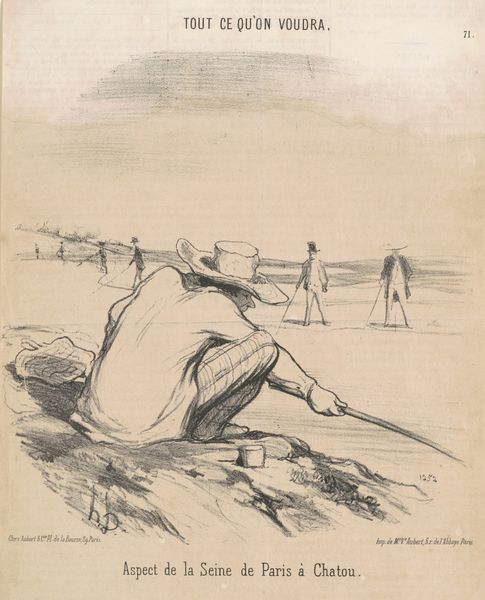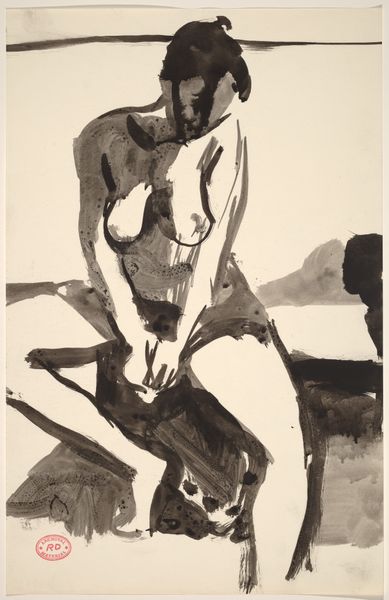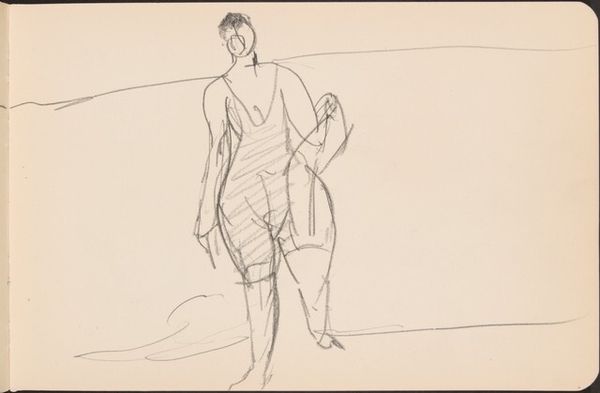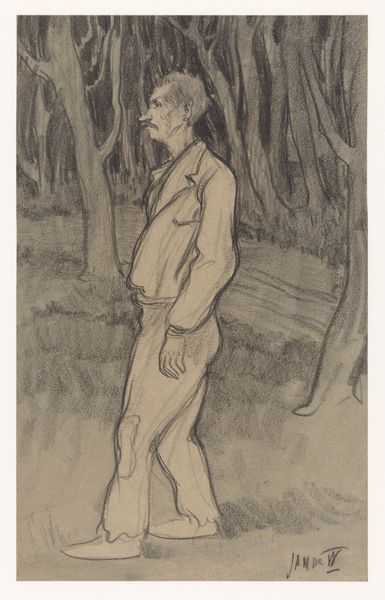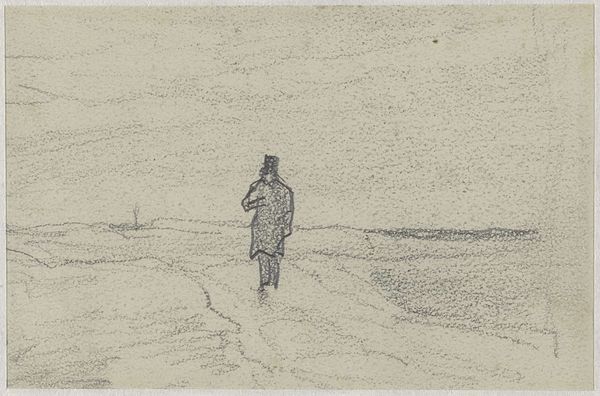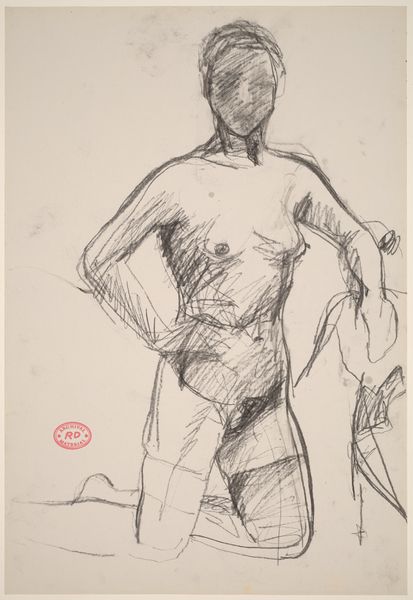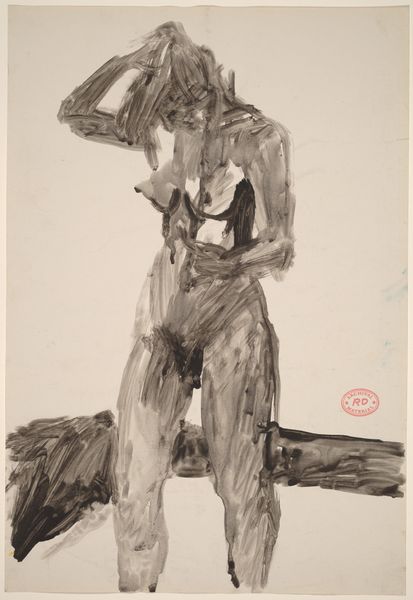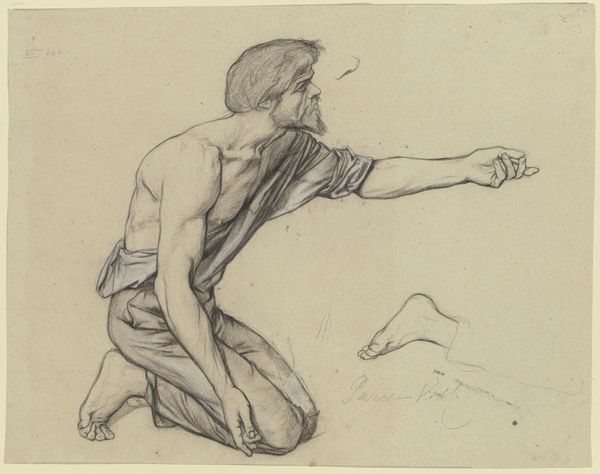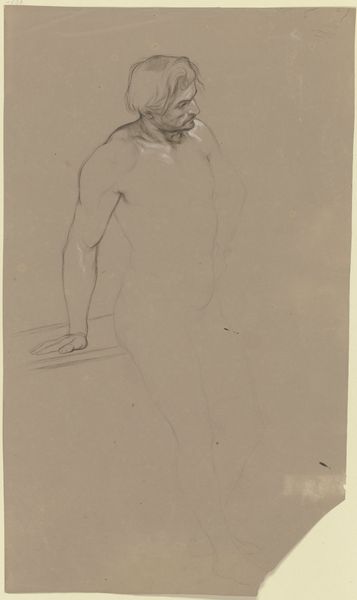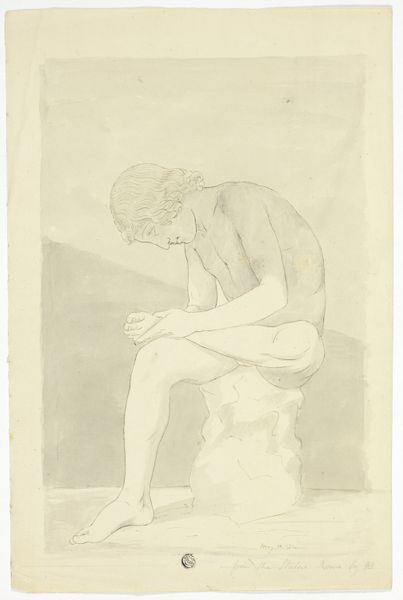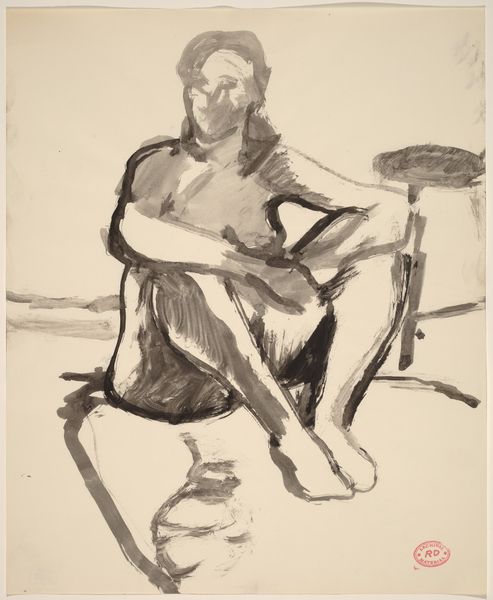
Copyright: Public Domain
Editor: So, here we have Hermann Lismann's "Bärtiger Mann in Badehose an der Côte d’Azur," created in 1911, using ink on paper. The figure appears so isolated. How do you interpret this work, especially given its historical context? Curator: It's a striking image, isn't it? I see it as a potent commentary on masculinity and leisure during the early 20th century. The “bearded man” isn’t merely a neutral figure. Consider the time. What did it mean to portray male vulnerability? Editor: Vulnerability? I hadn’t really considered that. Curator: Absolutely. The beach scenes, historically, have often portrayed ideals of beauty and the body, often female. By rendering this man in such a way—slightly awkward, seemingly contemplative—Lismann perhaps disrupts that narrative. Who does he represent beyond himself? Editor: You’re making me think about how artistic portrayals reinforce and also subvert gender norms. Curator: Exactly. And remember, the Côte d'Azur itself was becoming a playground for the European elite. How does the depiction of this bearded man challenge or reinforce ideas about class and leisure at that time? It prompts questions about belonging, exclusion, and the male gaze. What’s the relationship between him, as the subject, and the artist who depicted him? Editor: I now see this work speaking to the relationship between art and society, where depictions both reflect and shape norms. Thank you! Curator: My pleasure! It’s about looking beneath the surface, always interrogating the ‘why’ behind artistic choices and their effects.
Comments
No comments
Be the first to comment and join the conversation on the ultimate creative platform.
